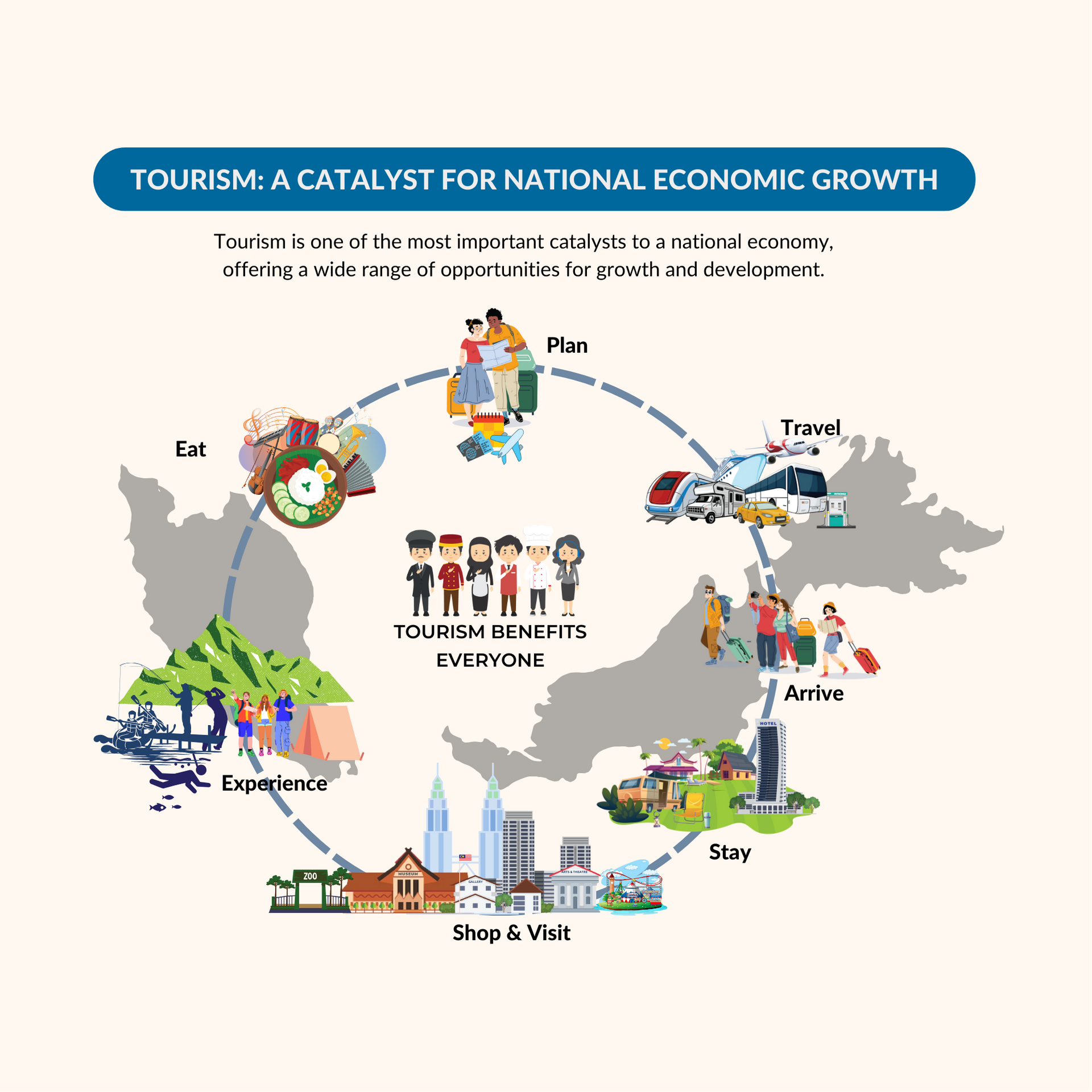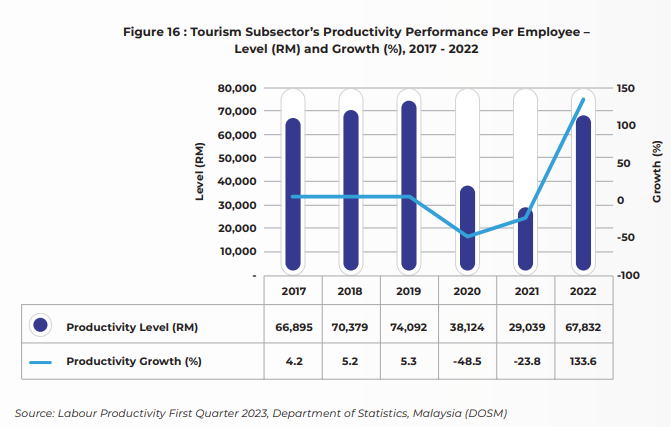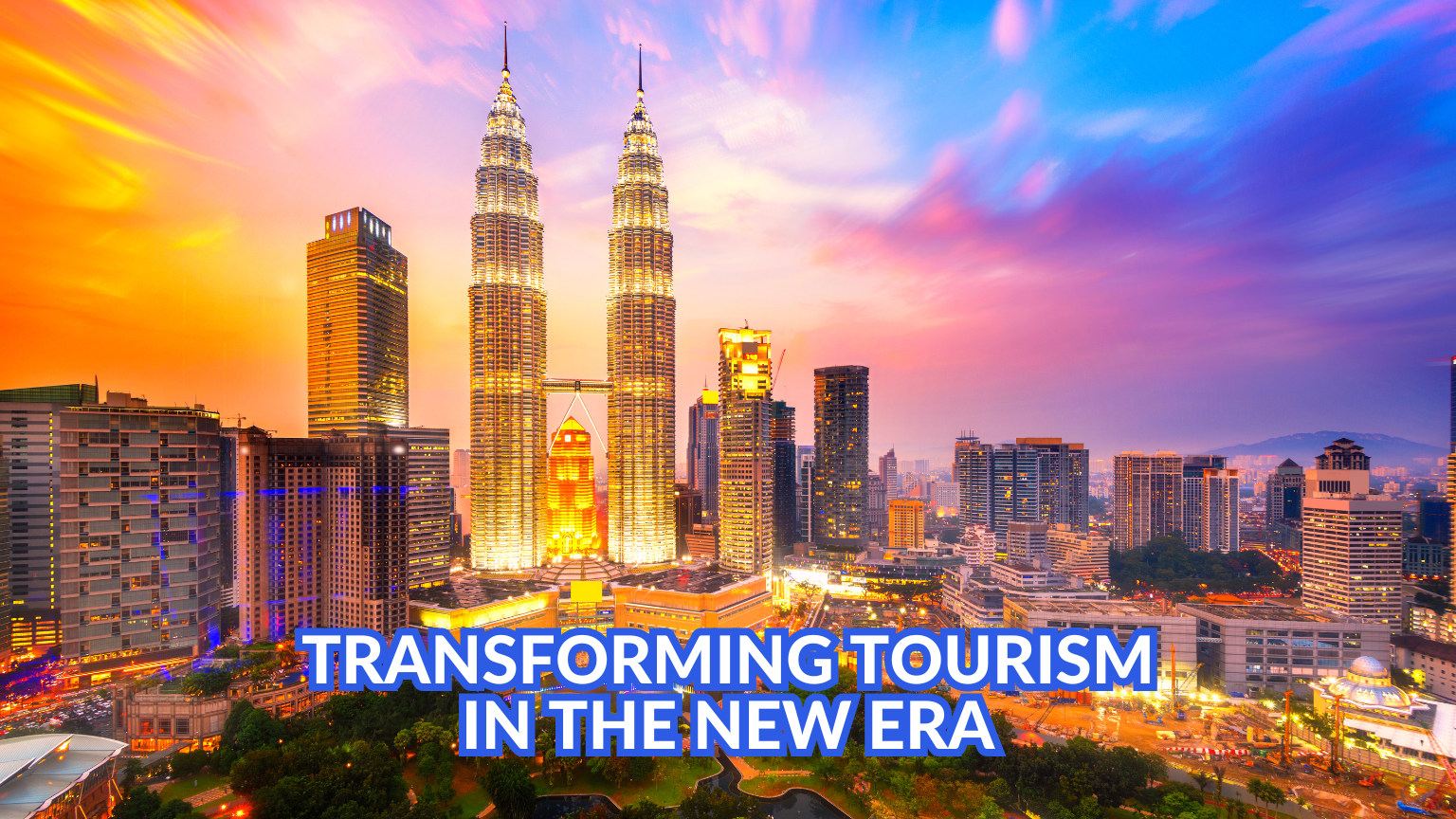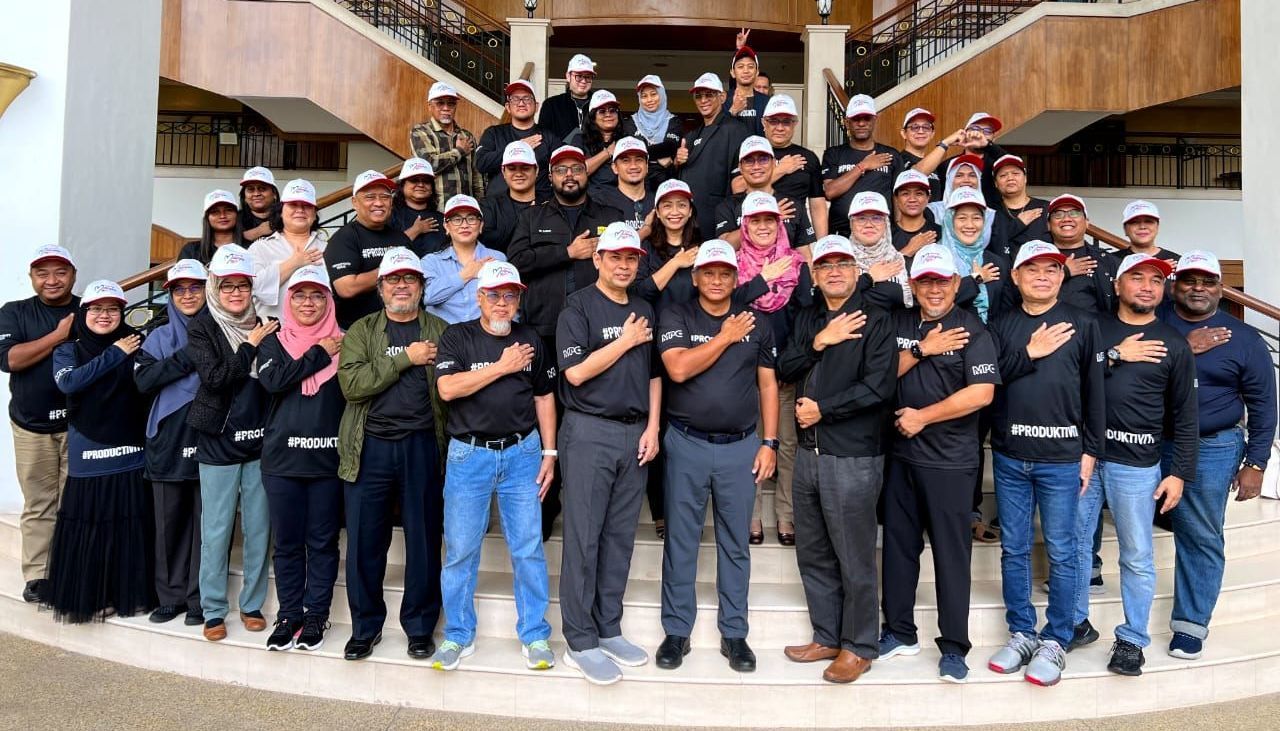

Overview of Tourism Sub-Sector
The Malaysian tourism sub-sector plays a vital role for the Malaysian economy and has seen steady growing contributions to the country’s total GDP. In 2019, the sub-sector contributed RM86.1 billion to the country’s economy, making it the third biggest contributor after manufacturing and commodities. In 2020, however, when the COVID-19 pandemic emerged, the tourism sub-sector was severely impacted. Various lockdown measures have been implemented since March 2020 to contain the spread of the virus, ranging from border closures to movement control orders (MCO). Tourism Productivity Nexus (TPN) is an industry-led establishment under the purview of Malaysia Productivity Corporation (MPC). Established as part of Malaysia Productivity Blueprint (MPB), TPN serves as the one-stop centre which assists enterprises to boost productivity, increase innovation, and capture growth opportunities that will lead to higher productivity of the tourism industry. TPN champions various initiatives with the aim to facilitate growth and increase productivity at the national, sectoral, and enterprise level, where the main strategic thrust to boost productivity are talent, industry structure, regulation, digitalisation and productive mindset..
Productivity Performance

Malaysia’s tourism industry’s productivity performance rebounded strongly from the impact of the pandemic after registering two years of consecutive negative growth. The subsector’s productivity grew significantly at 133.6 per cent in value added per employee. Its productivity level per employee in 2022 at RM67,832 approximated the pre-pandemic level of RM74,092 per employee in 2019. Between 2017 – 2019, labour productivity for the tourism subsector recorded a slow growth on an upward trend, from 4.2 per cent in 2017, 5.2 per cent in 2018, and 5.3 per cent in 2019. The productivity level increased from RM66,895 per employee in 2017 to RM74,092 in 2019. Then, the pandemic dragged the industry's productivity to negative growth in 2020 and 2021.
Challenges
- Declining tourism receipts
- Lack of industry resilience
- Intense competition with the neighbouring countries
- Inadequate innovation in tourism products and services
- Shifting away from emphasising niche products and high-yield tourism
- Less conducive regulatory framework for ease of doing business
- Sluggish technology adoption and business digitalization
- Shortage of workers
- Lack of sustainable tourism awareness and practices










